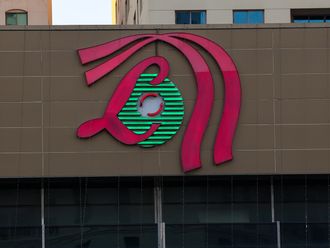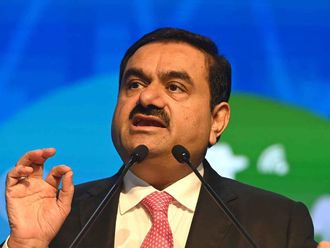‘It was the best of times, it was the worst of times”...
This article tells the tale of two countries that took two, distinct paths towards reforming their economies and uplifting their people out of poverty. The two are Saudi Arabia and Iran, and the break-off year is 1979.
Before I embark on comparing the different economic factors that shaped the country’s position, as well as elaborate on the economic scene in each, I would first like to point out a few commonalities. Both Saudi Arabia and Iran are oil producers and Organisation of Petroleum Exporting Countries (Opec) members — oil was discovered in Iran in 1908 and in Saudi Arabia 30 years later.
Iran in the 1960s and 1970s even boasted a western-educated population of technocrats, driving Iran’s economic reforms and at the time, an advantage that many countries did not possess. So, what happened?
Looking back at data from the 1960s, and in 1968 to be more specific, Iran had double Saudi Arabia’s GDP and four times its population, making Iran’s GDP per capita half that of Saudi Arabia. One may argue here that Saudi Arabia had an advantage from the beginning, being a smaller population with newly founded oil wealth.
However, economic and other factors tell a different story altogether.
The year 1979 was when Iran shifted its focus from internal economic reforms that would drive future growth, to using whatever US dollars it got access to towards destabilising the region around it.
In the past four decades, Saudi Arabia has spent more on education, culminating in higher literacy rates for its population among different age groups, providing in return better employment prospects. Saudi Arabia’s GDP today is 1.5 times that of Iran. Not only that, GDP per capita for each Saudi citizen, adjusted for purchasing power, is almost three times that of an Iranian citizen. (Purchasing power is a reflection of economic growth and a stable, strong currency.)
Saudi Arabia’s unemployment rate is today half that of Iran’s average — 5.6 per cent and 12.4 per cent respectively. Unemployment rates in areas outside Tehran could be anywhere between 30 per cent and 60 per cent.
When looking at youth unemployment figures, the rate stands at 26.7 per cent for Iran and 36.2 per cent for Saudi Arabia, with the youth population being 23.7 per cent and 26.6 per cent in Iran and Saudi Arabia respectively.
Now even though both countries enjoy favourable demographic trends, Iran is better positioned to make use of its youth population (aged under 25), as well as those in their “prime working age” (aged 25-54), given the fact that Iran’s population today is twice that of Saudi Arabia. So, in absolute terms, Iran has the numbers advantage with its demographics.
But wait a minute. Iran’s demographic advantage is expected to ebb in the 2040s, after which its population will go through the same demographic breakdown that haunts Japan and Europe today, and which the US and China are moving towards. The question to be asked here is, what is Iran doing about that? The answer is: Nothing.
Pensions in Iran, which should be in an excellent position given the demographic advantage, are already coming under a lot of pressure due to failure in maintaining adequate funding in the pension system. After all, billions of dollars are being spent everywhere but on the domestic economy despite the fact that Iran’s economy requires $200 billion (Dh734.6 billion) in annual investments, as per its Development Plan (2017-22). And that’s to only keep unemployment at its current rate and avoid an increase in it.
Ending economic isolation
In 2015, Iran signed a nuclear deal, known as the ‘Joint Comprehensive Plan of Action’ (JCPOA), with six world powers: the US, UK, Russia, France, China, and Germany. The deal was supposed to end Iran’s economic isolation that started in 1979, and to allow Iran’s banking and financial sector back into the international trade system.
This would have allowed Iran’s access to the dollar, the world’s reserve currency, which would guarantee its business transactions and bolster its banking sector’s liquidity (Iran’s banking sector risk is evaluated by the Economist’s Intelligence Unit (EIU) to be triple C, which is high risk).
As a result of signing the JCPOA, Iran received tens of billions of dollars in immediate relief, followed by government and business delegations knocking on Tehran’s door for business opportunities to service a population of more than 80 million.
Well, why not? After all, it’s all about common, commercial interests and exploiting the most profitable business opportunities in a world generally plagued by slow economic growth. And so, for all of those government and businesses delegations, Iran was the place to be.
I am afraid they’ve knocked the wrong door.
Across the Arabian Gulf, Saudi Arabia has done in two years what hasn’t been done in the past 40 years, providing more significant opportunities that have been selectively and deliberately overlooked, except that those opportunities do not carry with them the same nuclear threat when clauses in the JCPOA become void.
What’s happening in Saudi Arabia goes beyond the economic reforms that normally take place in countries seeking to shake up old economic structures and adopt newer and more modern ones. What’s happening in Saudi Arabia is not a 2030 vision that will increase revenues, but rather about Saudi Arabia’s target to quadruple its non-oil revenues.
The economic reforms are also about increasing the private sector’s contribution to the GDP to more than 50 per cent, in order to move from crude oil exports to refined petroleum products with a target of 75 per cent of exports being local components.
Moreover, Saudi Arabia’s economic overhaul includes the public listing of 5 per cent of its oil icon, Saudi Aramco, as part of its attempt to increase its sovereign assets by a factor of 10.
What’s happening in Saudi Arabia is worthy of nothing but outmost admiration. So, why is the wrong door being knocked on? For starters, Saudi Arabia is 30 places up the rank in Ease of Doing Business in comparison with Iran, based on the 2018 report published by the World Bank. The same has been observed in previous reports. Also, Iran ranks 131st out of 176 countries on the corruption index.
It has yet to improve its ranking by some 60 places to be at par with Saudi Arabia, which has already taken drastic measures to tackle corruption and prove its sincerity in pursuing a long-term economic agenda.
Finally, and in a model that I developed a few months back to measure development across different health, education, social and human development indicators in order to quantify hardship in countries; Saudi Arabia ranked 27 while Iran ranked 79.
The indicators, if anything, point to Saudi Arabia’s more serious attempt towards economic and other reforms compared to Iran.
Demographic advantage
In conclusion, Saudi Arabia and Iran are both at a demographic advantage that will vanish in 25-30 years, highlighting therefore the importance of economic reforms and fixes towards reducing unemployment, increasing purchasing power, and reducing poverty. Since 1979 and all the way to signing the JCPOA, economic pain in Iran has been self-inflicted.
And yes, sanctions did reduce Iran’s income from natural resources, but the little forex that Iran possessed and gained has not been put into domestic use nevertheless.
In contrast, and once achieved, Saudi Arabia’s recently announced economic plans are only going to widen the gap between the two economies — Saudi Arabia is already today the largest economy in the Middle East.
The last thought that I want to leave you with: Is destabilising the region worth Iran’s domestic economic pain?
Abdulnasser Al Shaali is a UAE-based economist.












